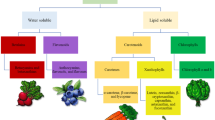Summary
-
1.
The efficacy of a given solvent for the extraction of the gland pigments of cottonseed has been shown to be determined not only by its solvent power for the pigments but also by its ability to attack the pigment glands and the extent to which these glands are exposed to its action, which in turn depends upon the degree of subdivision of the seed being extracted.
-
2.
The properties of the pigment glands have been utilized for the development of a method for mechanically fractionating cottonseed into pigment glands, embryo tissue (meal), and hull tissue. The process consists in the treatment of finely divided cottonseed with mixtures of inert liquids having densities intermediate between those of the seed parts being separated.
-
3.
The fractionation method has been shown to be applicable to the preparation of pigment glands, and pigment-free oil and meal from flaked cottonseed.
-
4.
The method has also been shown to be applicable to the separation of pigment glands from defatted cottonseed.
*** DIRECT SUPPORT *** A02O2172 00002
Similar content being viewed by others
References
Boatner, C. H., Oil & Soap21, 10–5 (1944).
Boatner, C. H., Caravella, M., and Kyame, L., Ind. Eng. Chem., Anal. Ed.16, 566–72 (1944).
Boatner, C. H., Caravella, M., and Samuels, C. S., J. Am. Chem. Soc.66, 838 (1944).
Burnett, R. S. and Fontaine, T. D., Ind. Eng. Chem.36, 284–8 (1944).
Carruth, Frank E., J. Am. Chem. Soc.40, 647–63 (1918).
Goldovskii, A. M. and Podolskaya, M. Z., Maslo. Zh. Delo.14, 9–12 (1938); Chem. Abs.33, 5688 (1939).
Harris, W. D., “Solvent Extraction of Cottonseed Oil,” Bull. Ag. and Mech. Coll. Tex., 4th Series, Vol.12, No. 12 (1941).
Haworth, R. D., in “Annual Reports on the Progress of Chemistry,” The Chemical Society, London36, 278–86 (1939).
Kyame, Lillian and Altschul, A. M., Plant Physiology, in press.
Markley, K. S. and Goss, W. H., “Soybean Chemistry and Technology,” Chemical Publishing Co., Brooklyn, N. Y. (1944).
Olcott, H. S., Cotton and Cotton Oil Press43, No. 7, 42–3 (1942).
Olcott, H. S., Ind. Eng. Chem.33, 611–5 (1941).
Pope, A. L., “Solvent Extraction of Cottonseeds to Recover Oil. tonseeds, Report No. 3, Blaw-Knox, Pittsburgh (1944).
Reeves, R. G. and Valle, C. C., Bot. Gaz.93, 259–77 (1932).
Schwartze, E. W. and Alsberg, C. L., J. Agr. Res.25, 285–95 (1923).
Stanford, E. E. and Viehoever, A., J. Agr. Res.13, 419–53 (1918).
Author information
Authors and Affiliations
Additional information
One of the laboratories of the Bureau of Agricultural and Industrial Chemistry, Agricultural Research Administration, U. S. Department of Agriculture.
About this article
Cite this article
Boatner, C.H., Hall, C.M. The pigment glands of cottonseed. Oil Soap 23, 123–128 (1946). https://doi.org/10.1007/BF02571838
Issue Date:
DOI: https://doi.org/10.1007/BF02571838




